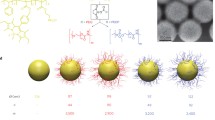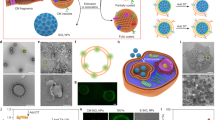Abstract
Previously, we developed a new molecular delivery system to target single living cells by using atomic force microscope and ultrathin needle referred to as nanoneedle. This system delivers molecules into the cell by attaching them to the surface of nanoneedle. However, nonspecific protein adsorption on the nanoneedle surface inside the living cells limits the range of application of this system. In the present study, we focused on nonspecific protein adsorption onto the nanoneedle surface inside the cells and examined whether this protein adsorption was reduced by modifying the nanoneedle surface with a biocompatible phospholipid polymer containing 2-methacryloyloxyethyl phosphorylcholine (MPC) unit. MPC polymer coating of the surface of silicon wafer reduced nonspecific adsorption of proteins from liver extracts and prevented the formation of clot-like protein aggregates. MPC polymer also decreased nonspecific adsorption of cytosolic protein onto the nanoneedle surface inside the living cell. On the other hand, MPC polymer showed no effect on nonspecific mechanical interaction between nanoneedle and the cell components. Surface modification with MPC polymer is a useful technique to modify the surface properties of nanoneedle.





Similar content being viewed by others
References
King R. Gene delivery to mammalian cells by microinjection. Methods Mol Biol. 2004;245:167–74.
Knoblauch M, Hibberd JM, Gray JC, van Bel AJ. A galinstan expansion femtosyringe for microinjection of eukaryotic organelles and prokaryotes. Nat Biotechnol. 1999;17:906–9.
Han S, Nakamura C, Obataya I, Nakamura N, Miyake J. Gene expression using an ultrathin needle enabling accurate displacement and low invasiveness. Biochem Biophys Res Commun. 2005;332:633–9.
Obataya I, Nakamura C, Han S, Nakamura N, Miyake J. Mechanical sensing of the penetration of various nanoneedles into a living cell using atomic force microscopy. Biosens Bioelectron. 2005;20:1652–5.
Obataya I, Nakamura C, Han S, Nakamura N, Miyake J. Nanoscale operation of a living cell using an atomic force microscope with a nanoneedle. Nano Lett. 2005;5:27–30.
Han SW, Nakamura C, Obataya I, Nakamura N, Miyake J. A molecular delivery system by using AFM and nanoneedle. Biosens Bioelectron. 2005;20:2120–5.
Obataya I, Nakamura C, Han S, Nakamura N, Miyake J. Direct insertion of proteins into a living cell using an atomic force microscope with a nanoneedle. NanoBiotechnology. 2005;1:347–52.
Tsuruta T. Contemporary topics in polymeric materials for biomedical applications. In: Abe A, editor. Biopolymers liquid crystalline polymers phase emulsion. Berlin: Springer; 1996. p. 33.
Ishihara K, Ueda T, Nakabayashi N. Preparation of phospholipid polymers and their properties as polymer hydrogel membranes. Polym J. 1990;22:355–60.
Ishihara K, Nomura H, Mihara T, Kurita K, Iwasaki Y, Nakabayashi N. Why do phospholipid polymers reduce protein adsorption? J Biomed Mater Res. 1998;39:323–30.
Kitano H, Imai M, Mori T, Gemmei-Ide M, Yokoyama Y, Ishihara K. Structure of water in the vicinity of phospholipid analogue copolymers as studied by vibrational spectroscopy. Langmuir. 2003;19:10260–6.
Moro T, Takatori Y, Ishihara K, Konno T, Takigawa Y, Matsushita T, et al. Surface grafting of artificial joints with a biocompatible polymer for preventing periprosthetic osteolysis. Nat Mater. 2004;3:829–36.
Watanabe J, Ishihara K. Cell engineering biointerface focusing on cytocompatibility using phospholipid polymer with an isomeric oligo(lactic acid) segment. Biomacromolecules. 2005;6:1797–802.
Goda T, Ishihara K. Soft contact lens biomaterials from bioinspired phospholipid polymers. Expert Rev Med Devices. 2006;3:167–74.
Masson JF, Battaglia TM, Cramer J, Beaudoin S, Sierks M, Booksh KS. Reduction of nonspecific protein binding on surface plasmon resonance biosensors. Anal Bioanal Chem. 2006;386:1951–9.
Konno T, Hasuda H, Ishihara K, Ito Y. Photo-immobilization of a phospholipid polymer for surface modification. Biomaterials. 2005;26:1381–8.
Sibarani J, Takai M, Ishihara K. Surface modification on microfluidic devices with 2-methacryloyloxyethyl phosphorylcholine polymers for reducing unfavorable protein adsorption. Colloids Surf B Biointerfaces. 2007;54:88–93.
Zhang X, Moy VT. Cooperative adhesion of ligand–receptor bonds. Biophys Chemist. 2003;104:271–8.
Iwasaki Y, Nakabayashi N, Nakatani M, Mihara T, Kurita K, Ishihara K. Competitive adsorption between phospholipid and plasma protein on a phospholipid polymer surface. J Biomater Sci Polym Ed. 1999;10:513–29.
Bam NB, Cleland JL, Randolph TW. Molten globule intermediate of recombinant human growth hormone: stabilization with surfactants. Biotechnol Prog. 1996;12:801–9.
Konno T, Watanabe J, Ishihara K. Conjugation of enzymes on polymer nanoparticles covered with phosphorylcholine groups. Biomacromolecules. 2004;5:342–7.
Miyamoto D, Watanabe J, Ishihara K. Effect of water-soluble phospholipid polymers conjugated with papain on the enzymatic stability. Biomaterials. 2004;25:71–6.
Sakai-Kato K, Kato M, Ishihara K, Toyo'oka T. An enzyme-immobilization method for integration of biofunctions on a microchip using a water-soluble amphiphilic phospholipid polymer having a reacting group. Lab Chip. 2004;4:4–6.
Acknowledgment
This study was partially supported by grants from the Ministry of Education, Culture, Sports, Science and Technology of Japan (Research and Development in a New Converting Field Based on Nanotechnology and Materials Sciences to JM and 19770163 to TK).
Author information
Authors and Affiliations
Corresponding author
Rights and permissions
About this article
Cite this article
Kihara, T., Yoshida, N., Mieda, S. et al. Nanoneedle Surface Modification with 2-Methacryloyloxyethyl Phosphorylcholine Polymer to Reduce Nonspecific Protein Adsorption in a Living Cell. Nanobiotechnol 3, 127–134 (2007). https://doi.org/10.1007/s12030-008-9002-4
Published:
Issue Date:
DOI: https://doi.org/10.1007/s12030-008-9002-4




